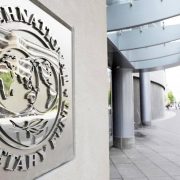West Philippine Sea: Naming and necessity

Last month, former Foreign Affairs secretary Enrique A. Manalo, just days before heading for his new post as Philippine Permanent Representative to the United Nations in New York, made an important announcement.
On X, he revealed that he had just signed Resolution No. 002 of the National Maritime Council (NMC) recommending standard Filipino names to 131 features of the Kalayaan Island Group (KIG).
Naming is an act of “effectivités” or “effective occupation”—to use a well-known international law doctrine establishing territorial sovereignty and associated claims. It belatedly comes nine years after the United Nations Convention on the Law of the Sea (Unclos) Annex VII Arbitral Tribunal handed down its ruling on the South China Sea (SCS) arbitration between the Philippines and China on July 12, 2016.
The 1978 Presidential Decree 1596 had created the KIG, a polygonal box of territory that functioned as an offshore archipelago. However, the decree did not identify the features within that box but declared everything within as our territory. We gave Filipino names to some, including nine of the larger features there that we have since occupied, but not to all.
But the 2016 SCS Arbitral Award (AA) ruled that any offshore archipelago claims in the SCS—like the KIG—is contrary to international law (paragraphs 573-576). WPS territorial claims will now have to be made on a rock-per-rock basis rather taken as a unity. Here, consistent display of acts of sovereignty, including clear identification and possession of claimed features, will be front and center (Palmas Arbitration, 1928; Eritrea/Yemen Phase 1, 1998; Nicaragua/Colombia, 2012). Historical titles that neither specify nor identify claimed territory do not measure up to this “intertemporal law.”
Hence, naming and necessity, with apologies to the analytic philosopher Saul Kripke, who published in 1980 a landmark book of that title. A core argument of his is that an object’s name and its identity is established by a causal chain of events going all the way back to the initial naming. There is something in Kripke’s idea that, translated to international law, may benefit efforts to show à titre de souverain (literally, sovereign title) of our claimed WPS features.
NMC was established in 2024 to craft a unified, coordinated, and effective strategy to secure the country’s maritime security and ensure domain awareness. It needs to realize that naming is only one in a list of necessities that the 2024 Philippine Maritime Zones Act failed to account for. The PMZA claims a 12-nautical mile territorial sea (TS) for each of high tide elevations (HTEs) in the SCS; but it neither names the HTEs we claim as ours nor draws TS baselines around them (Section 5). China immediately seized upon this yawning gap with a law claiming Panatag Shoal near the Zambales coast—an HTE per the AA—as Chinese territory with a Chinese name. Then it took one step farther by reporting the coordinates of 16 basepoints for the baselines of the shoal’s territorial sea.
China just did what we had been proposing in the last four years in the pages of this paper that the Philippines must do to buttress its WPS territorial claims.
Manalo spoke of 131 Philippine-claimed KIG features. This is not a trivial point. It is a number very close to the Jardeleza Proposal’s 128 features (“PH realities beyond the Arbitral Award”, Commentary, 8/10/2021).
Both clarify the ambiguities in Annex 97 of the Philippine Memorial to the SCS Arbitral Tribunal, which seemed to acknowledge only 43 Philippine-claimed features.
It is high time that we make clear how many HTEs in the WPS claim as our own. Does Manalo’s list include Sin Cowe Island (occupied by Vietnam) and Mckennan Reef (by China)? Julian Felipe Reef (JRF), a submerged feature, lies in the overlapping TS of the two HTEs.
Our policy makers have often raised hue and cry over Chinese vessels swarming JRF, which is found in our EEZ. But international law will always favor who has sovereignty over legal rocks—which are territory—over LTEs, which are not. We need to make up our minds on this question. The sooner we do, the better.
The next step is to address the PMZA’s puzzling omission: crafting for the President’s immediate issuance a Presidential Proclamation that (1) names all Filipino-claimed HTEs and other maritime features embraced by the old KIG; and (2) draws the basepoints and baselines of the HTEs’ respective TS and contiguous zone (CZ) pursuant to the Law of the Sea rules.
The CZ is essential for a coastal state’s enforcement of customs, fiscal, immigration, and sanitary laws. The PMZA rightly provides for it and adds the CZ as part of regulatory mechanisms for the recovery of archeological and historic objects in the seabed (Section 6). Under Unclos rules, if a coastal state does not declare a CZ, it will be absorbed into its EEZ.
Naming and other necessities in the WPS should not take the Philippine government another nine years to do.
—————-
Melissa Loja and Romel Regalado Bagares are independent Filipino scholars of international law.

















Show love to teachers this Christmas